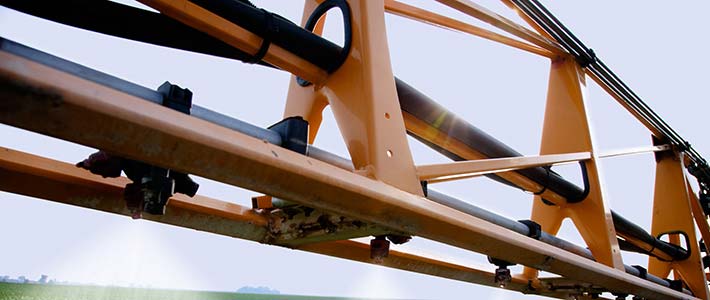According to the latest USDA-NASS report, 75 percent of the Minnesota soybean crop is rated good to excellent, about 88 percent of the crop is in flowering (4 days ahead of the 5 year average) and 59 percent of the crop is setting pods (6 days ahead of the 5 year average). It looks like we are in position to produce another decent to good crop. Reports from across the state indicates soybean aphids are present in measurable numbers; time to be scouting.
Minnesota Soybean resources support several exceptional entomology projects. Listed below is the most recent article* developed by University of Minnesota Extension Entomologist Bob Koch and his team. I also recommend listening to their recent podcast.
The foundation of a good integrated pest management (IPM) program is a properly implemented scouting program**. With the development of pyrethroid resistance, using the 250 aphid per plant on a majority of the scouted plants threshold is critical for the stewardship of our chemical resources. Utilization of the threshold level allows the predators such as ladybugs, and a growing population of the Aphelinus certus parasitic wasp***, to keep the aphid population under the economic threshold level (250 soybean aphids per plant). This saves time and expense of spraying an insecticide until needed. Some sales people will suggest throwing in some insecticide, usually a generic “Warrior” with your fungicide application, regardless of the scouting reports. This kind of thinking leads to the development of pyrethroid resistance. Given the current price of soybeans, every saved penny counts.
It also helps steward our chemical tools. While there are dozens of insecticide products labeled to control soybean aphids, there are only three groups (families) of chemicals: organophosphates, pyrethroids and neonicotinoids. Many of you used a neonicotinoid as a seed treatment. To steward your chemical families, one should rotate chemistry. This leaves several of you with either a pyrethroid or an organophosphate as the most logical selection
Over the last three years, we have seen an expanding (geographically) population of pyrethroid resistant aphids. If your fields require an aphid insecticide application, contact your local agronomist about development of resistance near you. If you apply an insecticide and have failure to control, eliminate the normal paths of insecticide failure (rate to low, improper application, etc.), then contact the University of Minnesota IPM team. The University, with support of Minnesota soybean checkoff dollars, has developed a quick assay to determine if a soybean aphid population has developed resistance to pyrethroids. Applying pyrethroids to pyrethroid resistant aphids does not make a farmer much money.
As we examine the pesticide choices, remember to read the pesticide labels. In the last several years, the number of chlorpyrifos (aka LorsbanTM ) impacted Minnesota surface waters bodies has increased with the spread of the pyrethroid resistant soybean aphids. Check your setbacks from surface water****. Aerial applied chlorpyrifos (and pyrethroids) setback are 150 feet from surface water, ground boom rigs should use a 25 foot setback. We do not need to lose these tools due to poor application techniques.
Soybean aphids can be an expensive problem, use all your tools wisely.
Literature cited:
* https://www.ag.ndsu.edu/publications/crops/management-of-insecticide-resistant-soybean-aphids
**https://swroc.cfans.umn.edu/sites/swroc.cfans.umn.edu/files/sba_scouting.pdf
***http://blog-crop-news.extension.umn.edu/2018/03/aphid-destroying-wasps-found-throughout.html
****http://www.mda.state.mn.us/protecting/bmps/~/media/Files/protecting/bmps/chlorpyrifosbmps.pdf
Tags: aphids







